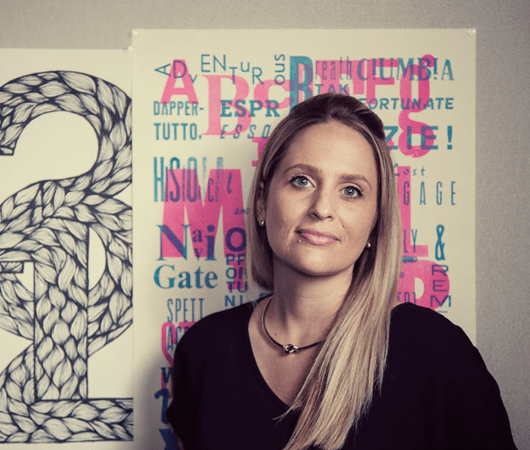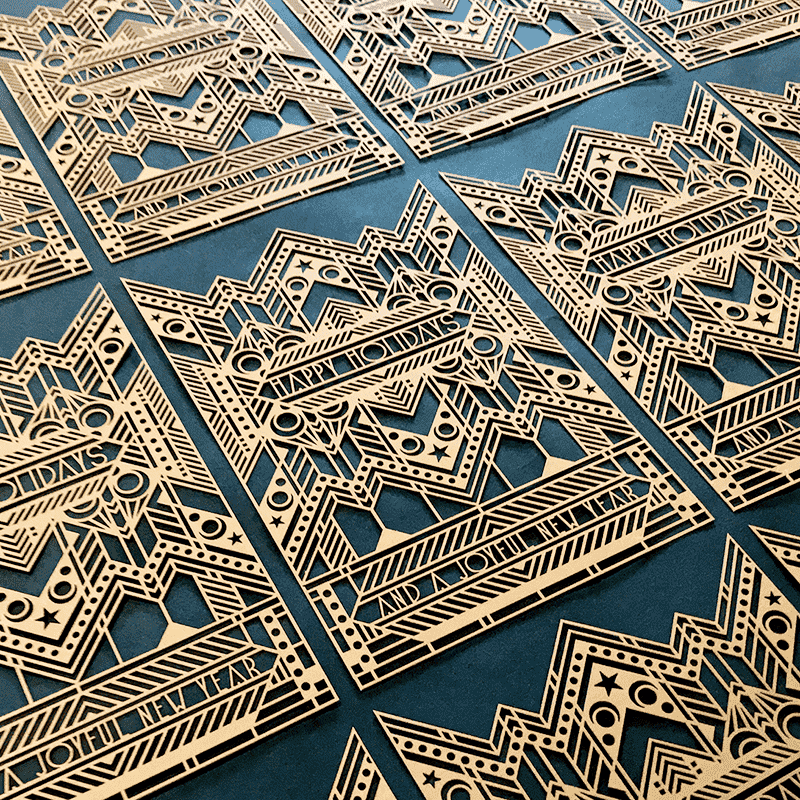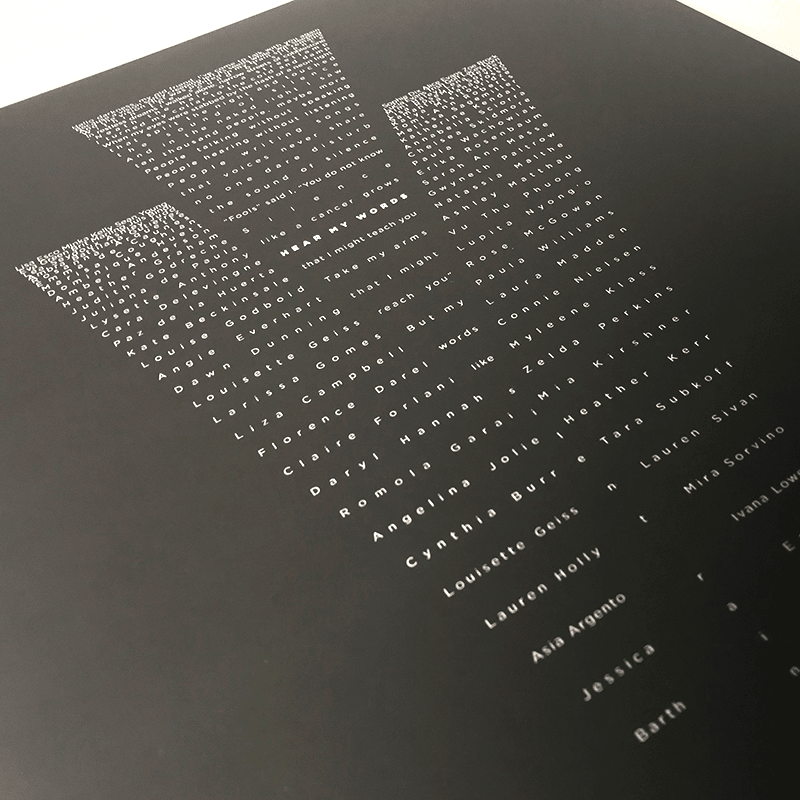From Dog Lover to Design Educator
Graphic Designer and Chair for the Graphic Design program at Virginia Tech
by Christina Lauren
|21 Jan 2020

"Listen to the client. Ask questions. Listen more. Take notes. Research the
problem. Sketch. Check out the competition. Refine ideas. Develop. Repeat if
necessary”.
High school is a tricky time when we either figure what we want to be when we grow up or not. Meaghan Dee was one of the lucky ones, as her time spent on the school's newspaper committee coupled with a passion for art, pushed her toward love for design. How did you become a designer? — we ask. “I always loved art and drawing. But it wasn't until high school when I joined the newspaper [that] I learned how to create infographics and get more involved with the design,” she says. After seeking out a college that would help pursue these dreams, Meaghan Dee soon found herself on the fast track to success.
“I'm a dog-loving typography nerd,” says the graphic designer and design educator. And when Dee isn’t facilitating the art of design as acting Chair for Virginia Tech’s Visual Communication and Design program, she’s volunteering for AIGA (the American Institute of Graphic Arts National Design Educators Committee)— a non-profit organization which aims to inspire, engage and advocate a deeper understanding and value of design to the world at large. Being a part of an expansive community of design enthusiasts help the educator stay informed on the latest design trends. The board actively “helps me stay connected.



I also regularly attend conferences (TypeCon being one of my favorites), read a lot, and listen to podcasts, “she says. In fact, when it comes to that necessary boost of inspiration, Dee accredits the written word: “Reading has been one of my biggest influences. Books like Designing Design, by Kenya Hara, changed how I think about my process and the world,” she admits.
When it comes to Dee’s approach to design, her process is simple: “I see design as visual problem solving or communicating. When working with a client, I do my best to fully understand their needs (and their audience) and then develop solutions that take all the factors into consideration. However, I also like to play with visual elements, so much of my design is exploring what's possible through different methods of creation,” she says. And how does one visualize the steps of their own creative process? Easy— "Listen to the client. Ask questions. Listen more. Take notes. Research the problem. Sketch. Check out the competition. Refine ideas. Develop. Repeat if necessary,” the designer says.
When it comes to Dee’s approach to design, her process is simple: “I see design as visual problem solving or communicating. When working with a client, I do my best to fully understand their needs (and their audience) and then develop solutions that take all the factors into consideration. However, I also like to play with visual elements, so much of my design is exploring what's possible through different methods of creation,” she says. And how does one visualize the steps of their own creative process? Easy— "Listen to the client. Ask questions. Listen more. Take notes. Research the problem. Sketch. Check out the competition. Refine ideas. Develop. Repeat if necessary,” the designer says.
In terms of tracking the success of her professional endeavors, Meaghan Dee knows what works and what doesn’t through a crystal-clear system: “1) If a client is pleased. 2) If I am pleased with the design. 3) If the design performs the function it is intended to. 4) If people I respect respond positively to the design,” she says. There are always times when a client pushes back, however, and several years in the field has taught the graphics mentor a thing or two. “I can take harsh criticism, but I don't respond well to disrespect,” she says. “I will listen to the negative feedback from the client, and then I will ask some follow-up questions to get specifics about what it is they don't like. If I can't get constructive feedback, it's hard to figure out how to create something they would respond well to” says Dee. For her, the complications of client feedback are an easy fix as long as communication is involved. “If a client doesn't like a particular aspect of a design, I try to ask follow up questions to understand why. Sometimes it's as simple as, "I hate pink”; other times, you find out the design reminded them of something else, or they wanted their design to do something [specific] but they hadn't told you that part,” she says.
To boot, the design inspiration has a good heart. A favorite design piece features a poster for Oceans Initiative, a non-profit organization dedicated to marine life conservation and awareness. “Oceans Initiative’s tagline is “Science for the Sea,” and I wanted to make a poster that captured both the beauty and science of what they do. Using a cymatic visualizer, CymaScope, I played a humpback whale song that Rob Williams (of Oceans Initiative) had collected. The cymatic visualizer reacted to the notes of the whale song, and through this, I gathered hundreds of images. I then went back through the imagery and selected the most striking images and composed the poster, while integrating the subtle “ocean” type. I enjoy playing with different sorts of language,” says Dee.
If it’s not working for institutions that work toward a greater cause, it’s supporting them. Dee admires Airbnb for helping the homeless find shelter in light of property loss and disaster. “While most people know them as a home rental company, they also responded when someone said they wanted to share their home for free to people displaced by a hurricane. They extended this idea into their Open Homes initiative, which allows people to donate spaces to people in need, including a large placement program for refugees,” she says. Such passion for people can be seen in her own philosophy as well. “While I by am no means a multi-million-dollar business, I do try to put good things and positivity into the world. I try to make my classroom a safe and inclusive space, and I strive to get students in need the resources to help them thrive,” the AIGI advocate tells us.
When the design guru isn’t working, she is exploring her passion for travel and dogs. “I've been very fortunate to get to travel to numerous places, and while it's sometimes for work (such as leading a study abroad trip to Italy and Switzerland), I always find inspiration on these trips. I've also been lucky to get to travel to some unique places, such as Antarctica because my step-mother is an Antarctic and Arctic guide," says Dee. When she’s not busy traveling the world, she’s inspiring her students. When asked about the best piece of advice worth repeating, Dee replies: “Ask for more money… in all seriousness, many of my students (particularly female) are tremendously talented, but they don't have a ton of confidence, and they end up accepting a lower salary than they deserve. Is an awkward 20-minute negotiation worth making several thousand more per year?” the graphic designer asks.
Current fascinations that feed into her work include breaking out of the proverbial comfort zone. "I've recently had the opportunity to work more with augmented and virtual reality projects, as well as exploring design for immersive environments. Typography and design have such a different feel in these sorts of spaces. I'm having to test my work more frequently, as this is less familiar terrain for me," says Dee. As for the future? What can the world expect more of for the humble humanitarian and design mentor— "I'd like to get tenure (fingers crossed). More generally, I want to keep exploring technologies and finding exciting collaborations and clients," she says.
Submit your work for Indigo Design Award competition
Related News and Updates
Loading...